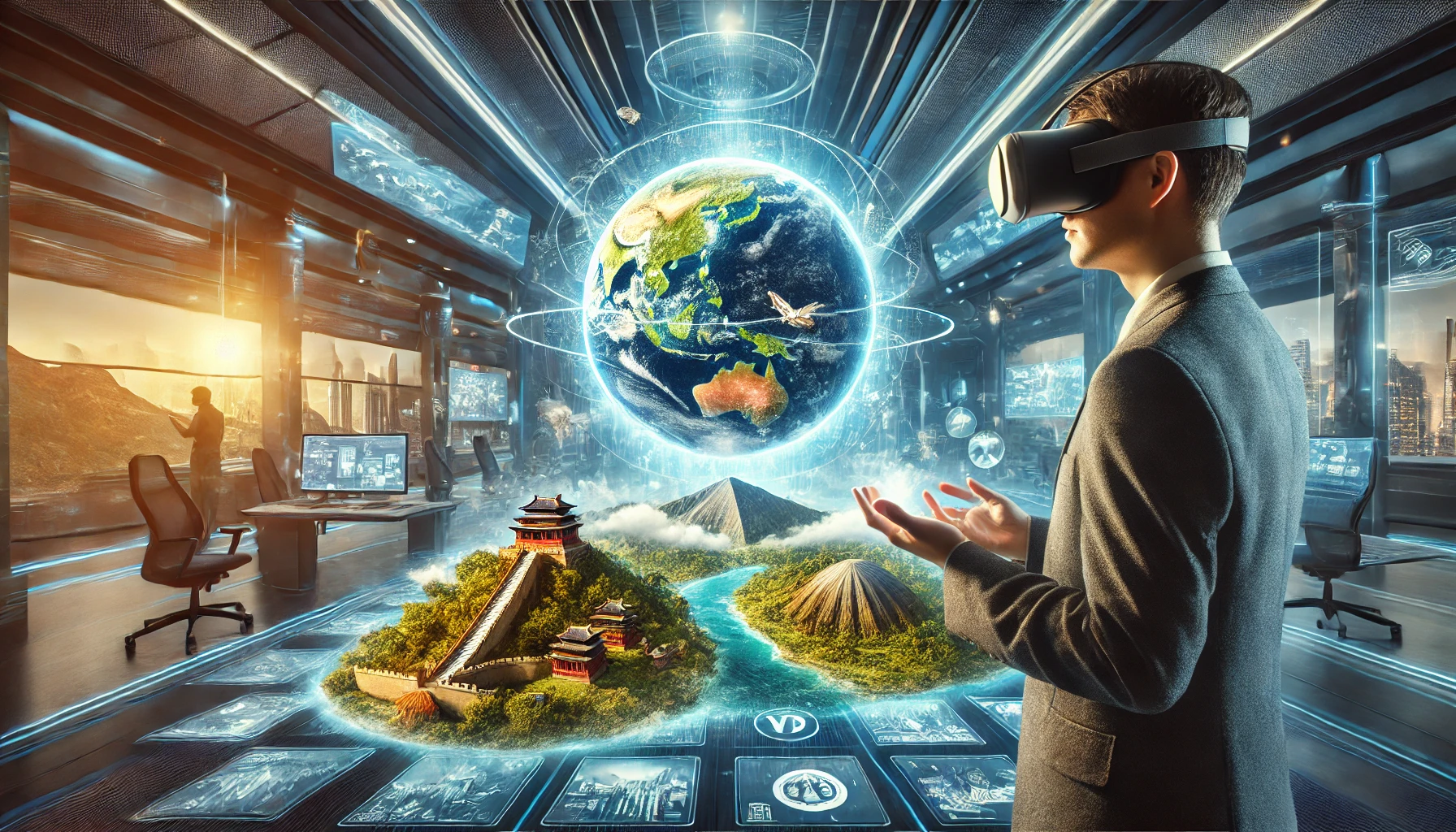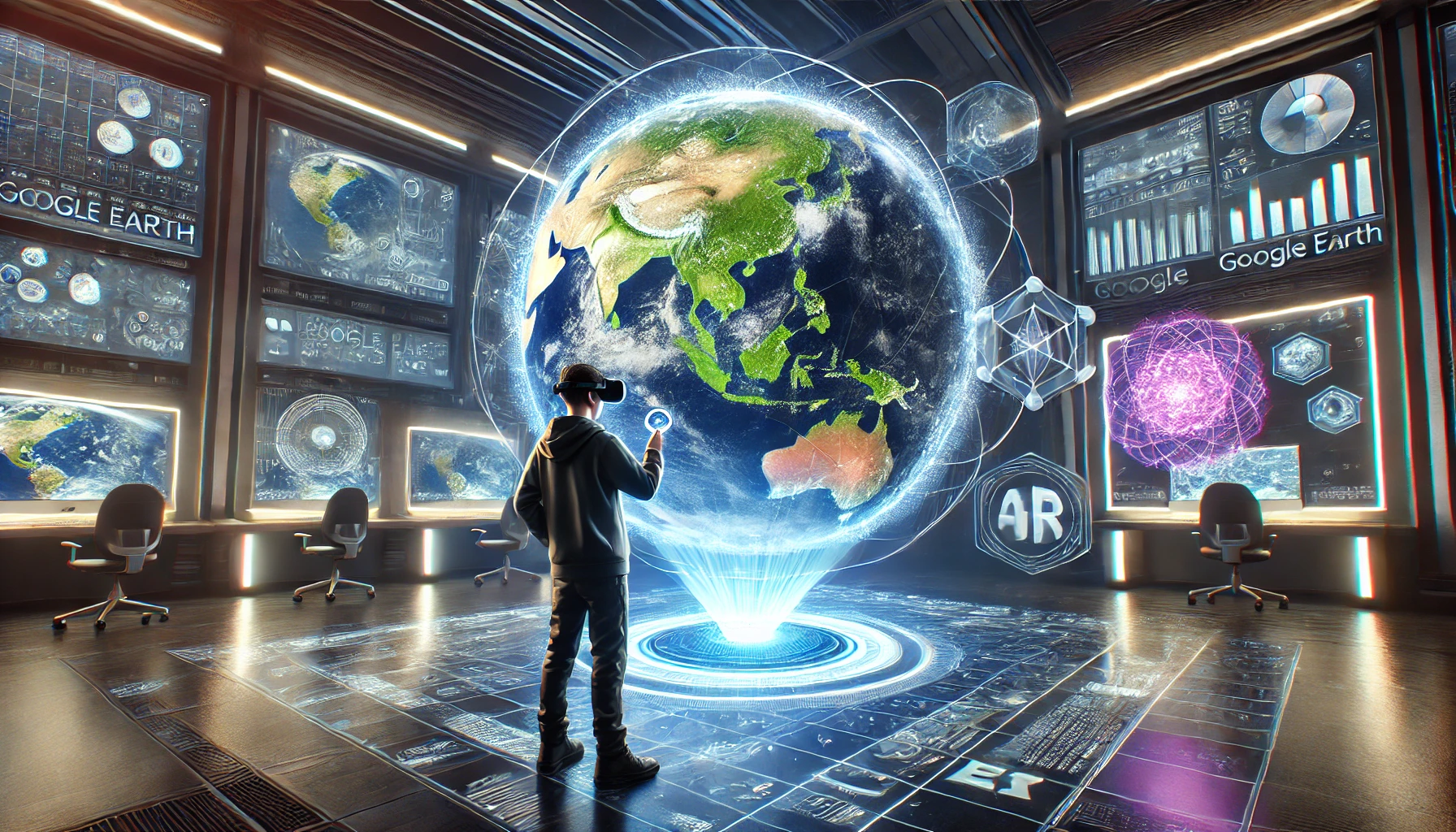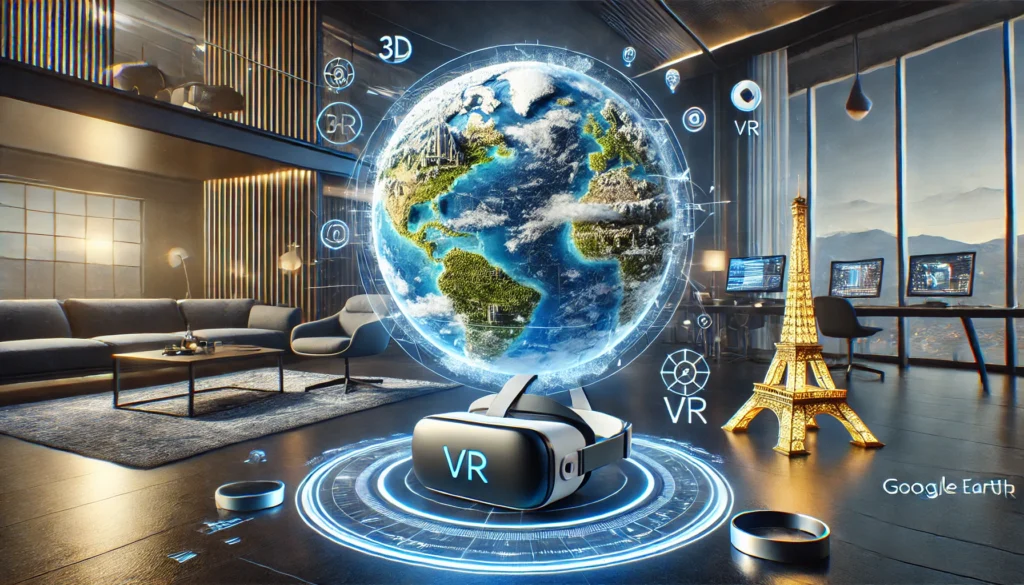Introduction
Imagine standing on the Great Wall of China, soaring over the Amazon rainforest, or diving into the depths of the Grand Canyon—all without leaving your living room. Thanks to Google Earth Virtual Reality, this is no longer a dream but a fascinating reality. By blending cutting-edge technology with immersive exploration, Google Earth VR allows you to experience the world in ways never before possible. In this article, we will dive into its features, benefits, and the limitless potential it offers.
What Is Google Earth Virtual Reality?
Definition
Google Earth Virtual Reality is an advanced platform that combines the powerful mapping capabilities of Google Earth with the immersive experience of virtual reality. It allows users to explore the globe in a fully immersive 3D environment.
Brief History
Google Earth Virtual Reality was first released in 2016, transforming the way people interact with maps and geography. Initially launched for high-end VR devices, it has evolved to support various platforms, making it more accessible to users worldwide.
How It Differs from Regular Google Earth
Unlike the traditional screen-based version of Google Earth, the VR edition offers an interactive, immersive experience. You can “stand” at locations, “fly” over cities, and experience landscapes in 360-degree views, making it feel as though you’re actually there.

Key Features of Google Earth VR
Immersive Travel
With Google Earth VR, you can:
- Walk through the streets of iconic cities like New York, Paris, or Tokyo.
- Soar above breathtaking landmarks such as the Eiffel Tower or Mount Everest.
360-Degree Views
Enjoy stunning panoramic views that allow you to see every detail of the world’s most famous destinations.
Customizable Exploration
Users can zoom in and out, change perspectives, and navigate seamlessly to any location on Earth.
Integration with VR Devices
Google Earth VR supports leading devices like Oculus Rift, HTC Vive, and others, offering a smooth and intuitive experience.
Street View in VR
Experience Street View like never before, stepping virtually into neighborhoods and landmarks in immersive 3D detail.
Benefits of Using Google Earth VR
Educational Value
- Perfect for students and educators to learn geography, history, and science interactively.
- Conduct virtual field trips to historical landmarks and natural wonders.
Travel Planning
- Preview destinations in VR before booking trips, giving travelers a detailed idea of their chosen location.
Accessibility
- For those unable to physically travel, Google Earth Virtual Reality offers a way to experience the world from their home.
Mental Well-Being
- Virtual exploration has been shown to reduce stress and foster a sense of adventure and curiosity.
Entertainment
- Whether you’re a travel enthusiast or simply curious, exploring the globe virtually is engaging and fun.
How to Use Google Earth Virtual Reality
Setting Up the Equipment
- A compatible VR device, such as Oculus Rift, HTC Vive, or similar systems, is required.
- Ensure your computer meets the minimum system requirements for VR functionality.
Downloading and Installing Google Earth VR
- Download the application from platforms like Steam or the Oculus Store.
- Follow the installation steps to get started.
Basic Navigation in Google Earth VR
- Use VR controllers to navigate, zoom, and select locations.
- Adjust your view by “flying” or “walking” through chosen areas.
Pro Tips
- Bookmark your favorite locations.
- Adjust VR settings for optimal comfort and clarity.
- Use the search feature to find specific destinations quickly.
Potential Applications of Google Earth VR
Travel and Tourism
- Revolutionizes the way people plan trips by allowing virtual previews of destinations.
- Tourism businesses can use it to showcase their locations interactively.
Education and Research
- Schools and universities can use Google Earth VR for virtual field trips.
- Researchers in geography and environmental sciences can analyze terrain and topography.
Urban Planning and Real Estate
- Architects and urban planners can visualize spaces in 3D before construction.
- Real estate agents can offer virtual property tours to potential buyers.
Personal Adventures
- Explore distant parts of the world for fun, relaxation, or curiosity.
Challenges and Limitations
1. Hardware and Accessibility
- The cost of VR equipment and high-performance systems can be a barrier for many users.
2. Internet and Data Requirements
- High-speed internet is essential for smooth navigation and high-quality visuals.
3. Lack of Live Interaction
- Google Earth Virtual Reality doesn’t offer real-time experiences or live updates for locations.
4. Potential VR Motion Sickness
- Prolonged use of VR may cause discomfort for some users, such as nausea or dizziness.

The Future of Google Earth Virtual Reality
1. Technological Advancements
- Anticipate improvements in VR resolution, hardware, and interactive capabilities.
2. AI Integration
- Future updates may include AI-driven features to enhance realism and interactivity.
3. Expanding Applications
- Collaborative VR experiences and live-streaming integration could be game changers.
4. Accessibility Improvements
- Lowering hardware costs and expanding compatibility could make VR more accessible to a wider audience.
Conclusion
Google Earth Virtual Reality is more than just a tool; it’s a transformative way to experience the world. Whether you’re an educator, traveler, or simply curious about exploring the globe, Google Earth VR offers endless possibilities for learning, planning, and entertainment. Try it today and step into a new dimension of exploration, bringing the entire planet to your fingertips.
FAQs
1. What devices are compatible with Google Earth Virtual Reality?
- Google Earth VR works with devices like Oculus Rift, HTC Vive, and other compatible VR systems.
2. Can I use Google Earth VR for educational purposes?
- Yes, it’s an excellent tool for interactive geography, history, and science lessons.
3. Is Google Earth VR free to use?
- Yes, the application is free to download on supported platforms.
4. Does Google Earth VR require high-speed internet?
- High-speed internet is recommended for seamless navigation and high-quality visuals.
5. Can I explore any location in the world with Google Earth VR?
- Most locations are available, but some areas may have limited details or data.



